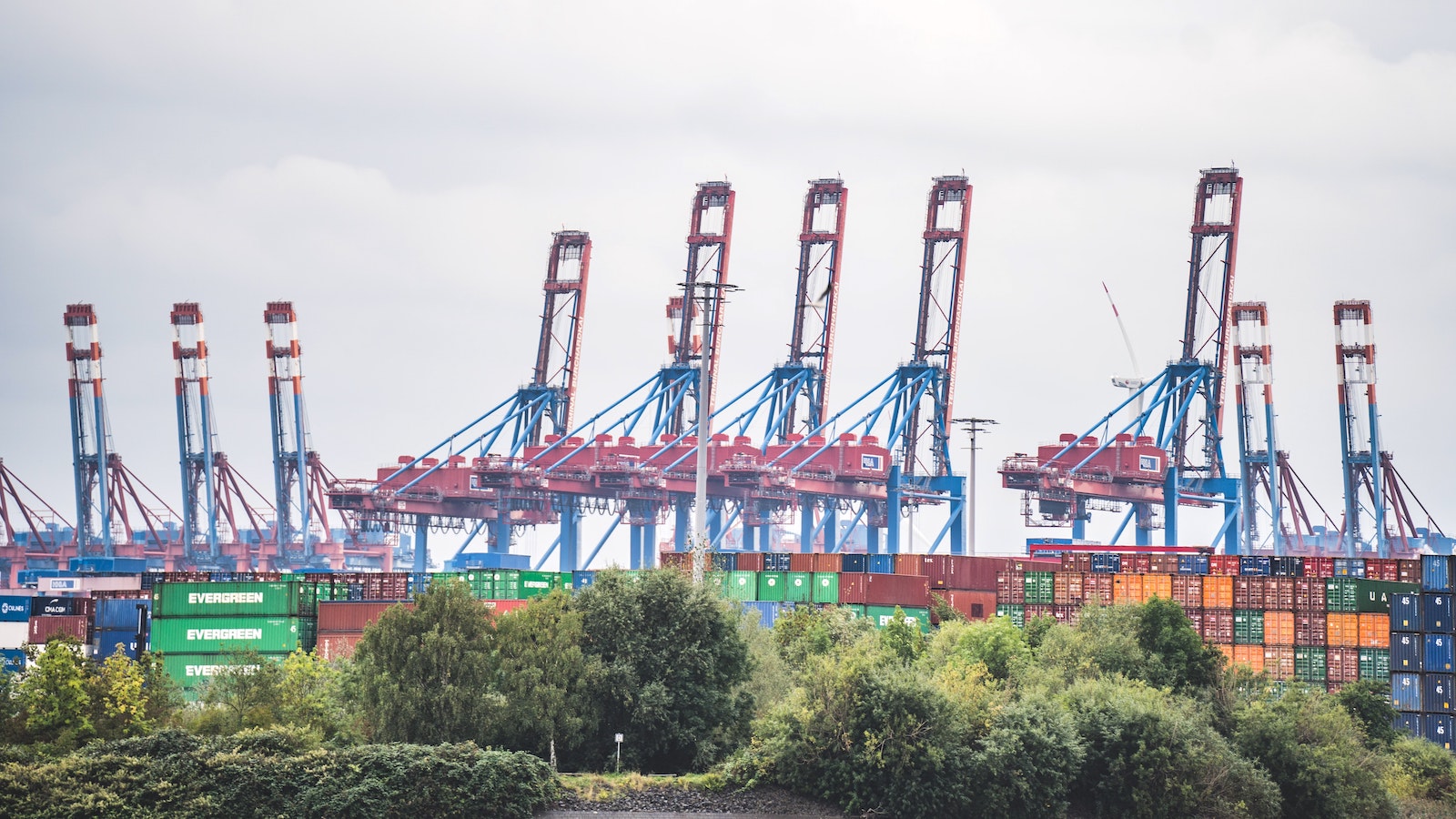Table of Contents
** Minutes
What is supply chain automation?
Benefits of supply chain automation
Limitations of supply chain automation
What supply chain processes can be automated?
When it comes to your business’s supply chain, it can be tempting to stick with what works. If your business has been around for a while, there’s a good chance that you’re still completing inventory counts, picking, packing, and other tasks manually.
However, some manual supply chain processes are not only outdated, but actually inefficient and even detrimental to your business.
Thanks to new technologies, merchants can now harness the power of automation in their supply chains. When correctly employed, supply chain automations can save precious money and time, improve your business’s productivity, and prepare it for the future.
In this article, we’ll cover what supply chain automation is, the pros and cons of incorporating automation into your supply chain, which supply chain processes can be automated, and how a platform like ShipBob can help you automate your logistics.
What is supply chain automation?
Supply chain automation refers to using technology solutions to perform or streamline supply chain processes without human attention, effort, or involvement.
By incorporating automation technology such as machine learning, artificial intelligence, and digital process automation into the supply chain, a business reduces the manual work required to perform certain business functions.
This in turn speeds up workflows and makes your supply chain more efficient.
Benefits of supply chain automation
Automating your supply chain processes can have a number of benefits. Here are some of the ways that your supply chain can benefit from automation.
Automating manual tasks
Supply chain automation enables your business to redirect human time and effort away from menial, time- consuming tasks, and devote that time and effort towards tasks that specifically require a human touch.
For example, tasks such as generating essential documents, processing orders, assigning picking slots, and paying out invoices can be extremely time-consuming.
Automating these tasks allows you to delegate to technology solutions that can complete the tasks much more efficiently, and frees human workers to attend to matters that actually need human input.
This increases your supply chain efficiency, as you’re not wasting your worker’s time and potential on tasks that another entity could perform.
Minimizing human errors
Humans make mistakes — and when tasks are performed manually, it’s very likely that something will go wrong.
By removing humans from the equation, automation lowers your risk of error and can prevent mistakes like:
- Accidentally duplicating an orders
- Incorrectly entering data from inventory or order details
- Entering inaccurate customer information (email, phone number, shipping address, etc.)
- Picking & packing the wrong item in an order
Increased supply chain visibility
Maintaining supply chain visibility requires a lot of labor, communication, connectivity, and commitment from both merchants, suppliers, and service providers.
Through digital automation, information is automatically recorded and updated in near real-time. This enables relevant parties to access important information when needed, track inventory, and communicate quickly throughout the supply chain.
Increased supply chain visibility subsequently helps you quickly identify and resolve bottlenecks to prevent further delays and disruptions, and increases overall efficiency.
“Our main need was a fulfillment platform that provided all the information in one place. So just having an interface like ShipBob’s dashboard that actually allows us to understand what we’ve got, where it is, what the problems are and where, and provide a lot more visibility into what we were doing was critical.”
John Greenhalgh, Co-Founder of A Year of Dates
Improved customer experience
With automation streamlining your supply chain, your customers will reap the benefits, too. A largely automated supply chain gets accurate orders fulfilled and shipped to customers quickly, and helps you maintain high customer satisfaction and loyalty rates.
Limitations of supply chain automation
Although automation has a number of benefits, it still has some limitations that you should keep in mind. These limitations may be particularly apparent in the small business supply chain, where there are fewer resources and smaller budgets involved.
Currently limited to certain tasks
Not all supply chain functions can be automated. While relatively menial tasks such as order processing, inventory counts, and administrative tasks are great candidates for automation, the majority of supply chain processes will still require human attention and involvement.
For example, although you can generate picking lists automatically and assign warehouse robots to assist you in the physical picking itself, these robots are still incapable of making critical decisions based on the current situation (for instance, what to do in case of shortages). Moreover, they lack the dexterity needed to pick certain items that are stored in more challenging locations.
Cost
Advanced supply chain technology often requires significant financial investment, often costing thousands of dollars in annual fees or one-time licenses.
This type of major financial investment may not be viable for smaller ecommerce operations and startup DTC businesses. Typically, in order to access supply chain automation systems, these brands outsource their warehousing and fulfillment operations to a tech-enabled 3PL or logistics platform.
“ShipBob’s technology provides cost savings. Other 3PLs pass fees onto the client for work they do related to manual processes because they lack the fulfillment technology needed to meet customer expectations.”
Carl Protsch, Co-Founder of FLEO
What supply chain processes can be automated?
While it isn’t currently possible to automate your entire supply chain, merchants can automate key processes and tasks to save time, resources, and money. Here are some of the supply chain processes that you should consider automating.
Back-office
Supply chain automation makes administrative tasks and regular business processes much easier to manage.
Certain tools enable you to automatically pull data from purchase orders into your software, and your financing and accounting tasks can also be automated by automatically processing invoices and maintaining your financial records.
Supply chain analytics also benefit from automation, as automation helps a business owner keep track of key performance metrics without spending hours gathering data and crunching the numbers themselves.
In this way, supply chain automations can actually produce more accurate insights for your business to help you improve your current operations and plan for the future.
For example, predictive analytics automations involving machine learning review historical inventory and sales data to improve demand forecasting and procurement.
Alternatively, cognitive analytics automations — programs where machine learning and artificial intelligence model human decision based on data sets — facilitate a smoother, quicker decision-making process. The smooth AI decision-making comes from the processes based on the deep neural networks of the ML models.
Transportation
Automation can also be applied in some of your transportation processes.
Route-optimization automations determine the best routes and assign the most suitable carrier for shipments, which can help reduce transit time and lower shipping costs.
Many automation tools give you better supply chain visibility with real-time transit tracking. This enables you to keep a close eye on where your vehicles are, which inventory items are in transit, and whether there are any potential delays.
You can then use this information to optimize the movement of your goods in order to reduce operational costs and transit times.
Warehouse
Fulfillment and warehousing are the two supply chain operations that most often incorporate automation.
Beginning with order processing, certain software automations can automatically receive and confirm orders, and send tracking information to customers.
In some cases, these programs can also automatically forward every order to the fulfillment center location that is closest to the order’s destination.
When it comes time to pick orders, some warehouse automation solutions involve goods-to-person (GTP), where machines and robots are used to assist human workers in the warehouse picking process. Pick-to-light (PLT) systems, which involve barcodes and LED lights, can also be used to improve the speed at which workers locate the right items to pick.
Additionally, you can make use of the box selection algorithm to ensure that each order is shipped out with the ideal package size so as to reduce dimensional weight and minimize the risk of damage.
Some warehouse automation tools even come with features to determine where to best store inventory to make the most of available space while increasing picking efficiency.
“Logistics is something you never think about until it stops working, and we’ve never come to that point with ShipBob. Everything just works. We are super happy with ShipBob and very impressed by how well they’ve pumped out our large volume of orders.”
Sergio Tache, CEO of Dossier
Inventory
While inventory management requires human expertise, there are aspects of it that can be automated.
Automatic reorder point notifications when you hit a threshold amount for a particular SKU helps you time replenishment perfectly, and prevent stockouts and backorders.
Some merchants choose to automate the restocking entirely, and set up their system to automatically reorder stock when a SKU hits its threshold to save time and trouble.
Automatic inventory counts that are up-to-date, even to the minute, gives you the best visibility into inventory levels so that you know exactly how much stock you have left at a given time.
Automate your supply chain with ShipBob
If your business is struggling with supply chain automation due to budget constraints or lack of resources, partnering with a logistics platform like ShipBob is a great solution.
ShipBob in particular utilizes automation strategically throughout the supply chain to optimize cost- and time-savings in each stage.
ShipBob’s software integrates directly with your ecommerce platform, so that as soon as an order is placed on your store, ShipBob automatically processes that order.
Depending on which ShipBob fulfillment centers you’ve chosen to activate, ShipBob will forward each order to the fulfillment center closest to that order’s destination.
Every fulfillment center is equipped with automatic pick list generation and Cubiscan technology to streamline the picking and packing process, and uses ShiPBob’s proprietary warehouse management system to keep things running smoothly.
Critical order and inventory management tasks can be automated through ShipBob’s dashboard. Set up automatic reorder point notifications or restocking, get real-time visibility into inventory levels, and automatically calculate the ideal distribution of inventory across ShipBob’s network of distribution centers.
By outsourcing warehousing, fulfillment, shipping, and logistics to ShipBob, your business can access supply chain automations to optimize your supply chain performance, as well as a partner to help you along the way.
Supply chain automation FAQs
Here are the answers to the most popular questions about supply chain automation.
Where is automation used in the supply chain?
Automation can be used in different stages of the retail supply chain, including administrative tasks, transportation, warehousing, and inventory management.
Are supply chains being automated?
Many ecommerce businesses now rely on automation tools to streamline different processes in the end-to-end supply chain. Although the entire supply chain can’t be automated, many of the time-consuming and manual processes can be improved with the help of automation.
Are supply chains going to be automated?
While modern supply chains utilize automation frequently, not all supply chains are fully automatable. Supply chains will become increasingly automated as time goes on, but will likely always require human attention and focus in certain areas.
What are the pros and cons of supply chain automation?
Automation enables better supply chain optimization through increased efficiency, improved visibility, and enhanced customer experiences. Moreover, automation helps streamline the supply chain, minimize human errors, and increase profitability. The biggest cons associated with supply chain automation are the cost of implementing automation tools and the fact that only certain tasks can be automated.



